
MOHS Hardness Scale a Wɔde Yɛ Nneɛma a Ɛyɛ Den
 Mohs hardness scale no yɛ ade a wɔde susuw sɛnea aboɔden abo anaa aboɔden abo bi tumi ko tia sɛ wɔbɛtwetwe no. Sɛ́ adwinnade titiriw wɔ aboɔden abo ho adesua mu no, Mohs nsenia no ho hia na ama wɔahu aboɔden abo na wɔasiw ano sɛ ɛrensɛe.
Mohs hardness scale no yɛ ade a wɔde susuw sɛnea aboɔden abo anaa aboɔden abo bi tumi ko tia sɛ wɔbɛtwetwe no. Sɛ́ adwinnade titiriw wɔ aboɔden abo ho adesua mu no, Mohs nsenia no ho hia na ama wɔahu aboɔden abo na wɔasiw ano sɛ ɛrensɛe.
Ɛhe na mineral hardness scale no din fi?
Germanni aboɔden abo ho ɔbenfo ne asase ho ɔbenfo, Freidrich Mohs, yɛɛ Mohs nsenia no wɔ 1812. Saa bere no, na aboɔden abo dodow no ara a wɔkyekyɛ mu no yɛ nnuru a ɛwɔ mu nkutoo. Bere a tete nhomanimfo, Theophrastus, de aboɔden abo a ɛyɛ den totoo ho kan wɔ afe 300 A.Y.B.
Mohs de dodow 10 sii hɔ: 1 sɛ nea ɛba fam sen biara na 10 yɛ nea ɛkorɔn sen biara. Ná nnipa pii nim sɛ daimond ne ɔbo a ɛyɛ den sen biara wɔ wiase, enti ɔde dii dwuma de gyinaa hɔ maa 10. Ofii hɔ boaboaa aboɔden abo 9 a ɛyɛ mmerɛw a wobetumi anya a ɛsono sɛnea ɛyɛ den ano de sii nea wɔahyehyɛ no biara.
Bere a Mohs nsenia a ɛkyerɛ sɛnea ɛyɛ den no nyɛ pɛ no, ɛyɛ adwinnade a ɛyɛ mmerɛw na ɛho hia ma aboɔden abo ho nimdefo anaa n’anigyefo biara.
Wɔ akwankyerɛ yi mu no, yɛbɛkyekyɛ nea enti a Mohs nsenia no ho hia, sɛnea wubetumi de adi dwuma, ne baabi a aboɔden abo biara hwe ase wɔ so — efi aboɔden abo a ɛyɛ mmerɛw so kosi nea ɛyɛ den sen biara so. Nanso sɛ yɛbɛhyɛ aseɛ a, MOHS Hardness Scale no ho nsɛm a wɔaka abom ntɛm nie:
1: Ɔkasa
2: Gypsum a wɔde yɛ nneɛma
3: Nnuru a wɔfrɛ no Calcite
4: Fluorite a ɛwɔ nipadua no mu
5: Apatite a wɔde di dwuma
6: Feldspar a ɔkyerɛwee
7: Quartz a wɔde yɛ nneɛma
8: Topaz a wɔde di dwuma
9: Nsɛm a Wɔahyehyɛ
10: Diamond a wɔde yɛ nneɛma
Afei, kɔ wɔn a aka no so!
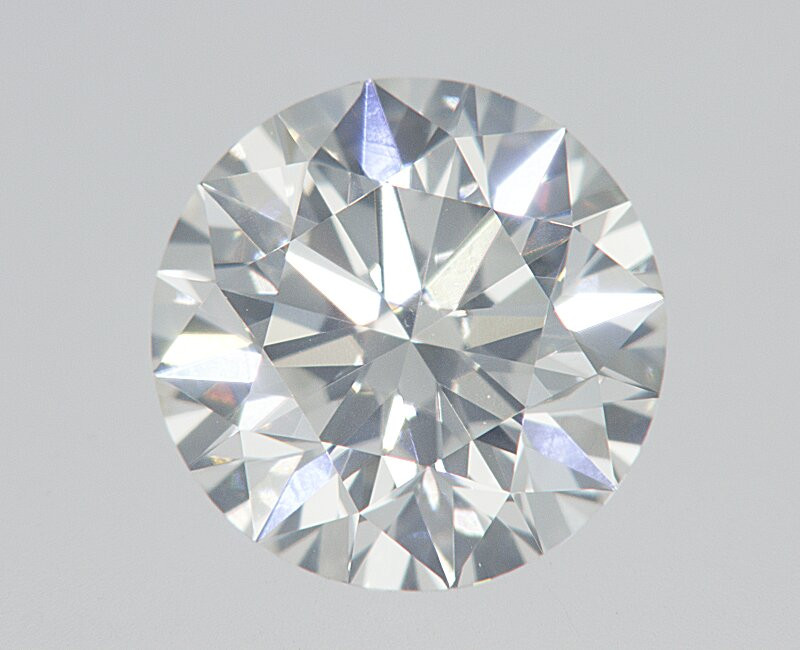
Dɛn Ne Mineral a Ɛyɛ Den?
Wunim sɛ hardness fa scratching ho, nanso yɛbɛyɛ dɛn akyerɛkyerɛ scratch mu?
Mohs hardness scale nkyerɛase a ɛfa “scratch” ho no yɛ sintɔ a ɛtra hɔ daa, a wotumi hu (anaasɛ “dislocation”). Sɛ ɔbo bi a ɛyɛ den (wɔakata so akyi) yɛ nea ɛyɛ den kɛse na ɛsan kɔ ne mfitiase nsusuwii ne sɛnea ɛte wɔ akyi no so a, ɛnde ɛno nyɛ nsensanee wɔ Mohs nsenia nsɛm mu.
Sɛ Mineral A tumi twetwe Mineral B a, Mineral A bɛkɔ soro asen Mineral B.
Enti, so aboɔden abo a ɛwɔ 8-level yɛ den sen mineral a ɛwɔ 4-level mmɔho abien? Dabi, nanso ɛno yɛ adwene a ɛnteɛ a abu so! Nokwarem no, Mohs nsenia no yɛ qualitative ordinal nsenia.
A quali-dɛn na afei? “Su” nsenia de su ahorow di dwuma de kyerɛkyerɛ biribi a wontumi nkan mu, sen sɛ wɔde akontaabu susuw. Wɔahyehyɛ nsenia a “ɛyɛ daa” no sɛnea dibea te. Level biara korɔn anaasɛ ɛba fam sen foforo kɛkɛ — wuntumi mfa ntoto dodow ho pɛpɛɛpɛ.
Wɔ mfitiase nsɛm mu no, na wobetumi de AJ asi 1-10 a ɛwɔ nsenia no ananmu na ne titiriw no, ɛyɛ adwuma saa ara.
Sɛ yɛhwɛ a, safir a ɛyɛ den no di 9, nanso safir yɛ den sen topaz mpɛn 2 (8 wɔ Mohs denyɛ nsenia so) na ɛyɛ mmerɛw sen daimond mpɛn 4 (10).

Hardness Levels a Ɛyɛ Soronko
Mfitiaseɛ 1-10 Mohs hardness scale nɔma no mfa minerals nyinaa ho, na nneɛma bi wɔ hɔ a ɛnkɔ so pɛpɛɛpɛ a ebia wobɛhyia.
Nea edi kan no, ebia wubehu nneɛma a ɛwɔ ntam te sɛ emerald a ɛyɛ den wɔ 7.5.
Mfinimfini rankings yɛ rankings pɔtee bi kɛkɛ wɔ nsenia no so. Wɔ emerald fam no, ɛba fam sen blue topaz hardness a ɛyɛ 8 nanso ɛkorɔn sen rose quartz hardness a ɛyɛ 7.
Ade foforo a ɛnkɔ so pɛpɛɛpɛ a ebia wubehu ne sɛnea ɛyɛ den .
Sɛ nhwɛso no, opal denden yɛ 5 kosi 6.5. Adɛn? Nsu a ɛwɔ opals mu no gu ahorow, na ɛma nea ɛwom no nhyia. Esiane sɛ nnuru a ɛwɔ mu no betumi aka sɛnea ɛyɛ den nti, opal ahorow abiɛsa betumi ayɛ 5, 6, ne 6.5.
Ade foforo a ebetumi aka aboɔden abo a ɛyɛ den no Mohs den ne wim tebea a ɛsakra. Sɛ nneɛma a atwa yɛn ho ahyia (sɛ nhwɛso no, mframa, osu, mmoawa, ne nea ɛkeka ho) ma aboɔden abo bi brɛ ase a, ebetumi ayɛ mmerɛw.
Nea etwa to no, ebia wubehu sɛnea ɛyɛ den wɔ ahwehwɛ koro no ara so.
Sɛ nhwɛso no, Kyanite ahwehwɛ no mu yɛ den 5 wɔ afã biako so na 7 wɔ afã a ɛteɛteɛ no so. Hardness levels ahorow no ba efisɛ axis biako wɔ molecule bonds a ɛyɛ mmerɛw sen foforo no.
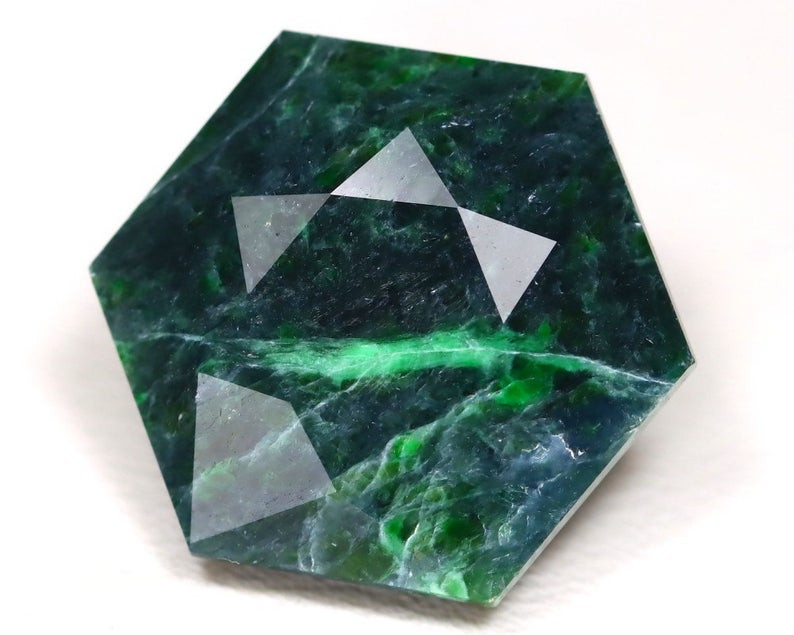
Hardness vs. Nneɛma a ɛyɛ den
Nnipa dodow no ara ate sɛ abohene ne ɔbo a ano yɛ den sen biara, nanso so ɛte saa? Diamond Mohs nsenia ranking yɛ 10, na ɛma ɛyɛ aboɔden abo a ɛyɛ den sen biara wɔ wiase.
Nanso, hardest nkyerɛ sɛ wontumi mmubu, efisɛ Mohs nsenia no nyɛ toughness nsenia.
Toughness (anaasɛ tenacity) kyerɛ sɛnea mineral bi tumi ko tia sɛ ɛbɛbubu anaasɛ ɛbɛpaapae.
Diamond wɔ brittle toughness, a ɛkyerɛ sɛ ɛnyɛ den sɛ ebebubu. Asɛm bi wɔ hɔ a wɔtaa ka sɛ: Dade hama ntumi nsɛe daimond, nanso ebetumi abubu daimond.
Momma yɛmfa abohene ntoto jadeite jade ho . Jade no den yɛ 6.5-7, enti ɛnyɛ den sɛ wobɛtwetwe sen diamond. Nanso, jade yɛ den sen diamond, enti ɛnyɛ den sɛ wobɛbubu diamond sen sɛ wobɛbubu jade.
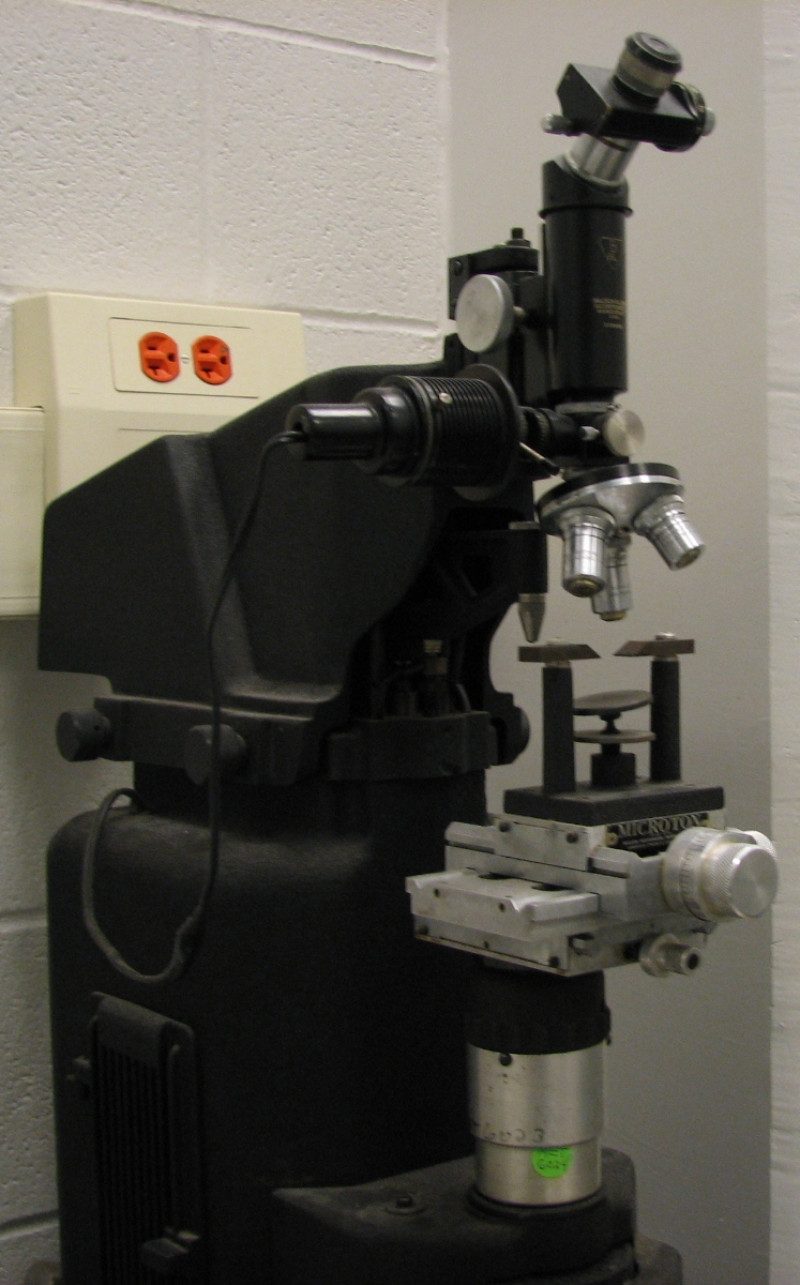 Mfonini: Vickers hardness tester a wɔde sɔ hwɛ
Mfonini: Vickers hardness tester a wɔde sɔ hwɛ
Mohs vs. Nneɛma Afoforo a Wɔde Yɛ Nneɛma a Ɛyɛ Den
Ɛnyɛ Mohs nsenia nkutoo ne aboɔden abo a ɛyɛ den nsenia. Nkaribo foforo bi ne Rockwell, Vickers, Knoop, Shore, ne Brinell. Mfaso wɔ nsenia biara so kɛse ma nneɛma ahorow pɔtee bi. Wɔn a nkurɔfo ani gye ho kɛse ne Rockwell ne Vickers.
Rockwell sɔhwɛ no de “differential-depth machine” di dwuma de da sɛnea indentation no yɛ den adi. Ɛsusuw sɛnea indentation bi kɔ mu dɔ, a egyina adesoa a edi kan, adesoa a ɛkɔ soro kakra so, afei adesoa kɛse bi so. Ɛyɛ hardness sɔhwɛ a ɛyɛ pɛpɛɛpɛ sen biara nanso ɛhwehwɛ nnwinnade a ɛkɔ anim.
Vickers sɔhwɛ no yɛ microhardness anaa micro-indentation sɔhwɛ, eye ma nhwɛsode a ɛyɛ tratraa anaa nketewa. Vickers nhyehyɛe no nso susuw indentation depth nanso indentations nketewa koraa. Nanso, sɔhwɛ no hwehwɛ sɛ wɔde nhwɛsode ahorow a ɛyɛ mmerɛw na ɛyɛ fɛ, nnwinnade a ɛkɔ anim, ne akontaabu ahorow.
Mohs sɔhwɛ no, aboɔden abo ho animdefo ne wɔn a wɔn ani gye ho taa de di dwuma efisɛ ɛyɛ nea wotumi nya no kɛse, enhia nnwinnade anaa akontaabu a ɛkɔ akyiri, na ɛyɛ mmerɛw sen biara sɛ wɔbɛte ase.
Sɛ yɛsan kɔ Mohs mineral scale no so a, momma yɛnhwɛ baabi a aboɔden abo biara di!
Mohs Scale of Hardness Chart a Wɔde Kyerɛw Nneɛma a Ɛyɛ Den
Aboɔden abo a ɛyɛ mmerɛw sen biara wɔ Mohs nsenia so ne talc. Efi hɔ no, yɛwɔ gyinapɛn a wɔde gyina hɔ ma aboɔden abo a ɛyɛ mmerɛw sen biara kosi nea ɛyɛ den sen biara:

Nokwarem no, aboɔden abo ahorow bɛboro du na ɛwɔ hɔ. Nea ɛka ho no, nneɛma a ɛnyɛ aboɔden abo te sɛ dade, nsateaa nnadewa, penny, ne ahwehwɛ nso wɔ nea wɔde susuw sɛnea ɛyɛ den.
Momma yɛnhwɛ hardness scale a edi mũ — minerals, gemstones, ne nneɛma afoforo a ɛka ho — efi nea ɛyɛ mmerɛw so kosi nea ɛyɛ den so:
1: Ɔkasa
1 - 2: Graphite, Molybdenite, Pyrophyllite a wɔde yɛ nneɛma
1 - 3: Bauxite a ɛwɔ hɔ
1 - 5.5: Limonitefoɔ
1.5 - 2.5: Nsuo a ɛyɛ fɛ
2: Gypsum, Sylvite, Glauconite a ɛwɔ nipadua no mu
2 - 2.5: Halite, Sinabar, Chlorite, Nsateaa nnadewa
2 - 3: Muscovitefoɔ
2.5 - 2.75: Galena na ɔyɛɛ saa
2.5 - 3: Dwetɛ, Sikakɔkɔɔ, Kɔbere, Chalcocite, Biotite
2.5 - 3.5: Barite a woagye atom
3: Calcite, Kɔbere krataa
3 - 3.25: Bornite a woagye atom
3 - 3.5: Nsuo a ɛtɔ gu fam, Anhydrite
3 - 4: Vanadinite a ɛwɔ hɔ
3 - 5: Ɔwɔ
3.5 - 4: Sphalerite, Rhodochrosite, Pyrrhotite, Malachite, Dolomite, Kuprite, Chalcopyrite, Azurite
3.5 - 4.5: Siderite a woagye atom
3.5 - 5: Magnesite a ɛyɛ fɛ
4: Fluorite a ɛwɔ nipadua no mu
4 - 7: Ahwehwɛ, Nnadewa
4.5 - 7: Kyanitefoɔ
4.5 - 5.5: Wollastonite a woagye atom
5: Apatite a wɔde di dwuma
5 - 5.5: Titanite, Monasifoɔ
5 - 6: Uraninite, Turquoise, Ilmenite, Abɛnblende, Enstatite a ɛyɛ fɛ
5 - 6.5: Magnetite, Sekan agyan, Dadeɛ fael
5 - 7: Streak mprɛte
5.5 - 6: Sodalite, Nepheline, Chromite, Augite, Arsenopyrite a wɔde di dwuma wɔ ɔkwan a ɛyɛ nwonwa so
5.5 - 6.5: Hematite, Rhodonite, Diopside
6: Feldspar a ɔkyerɛwee
6 - 6.5: Rutile, Pyrite, Prehnite, Nephrite Jade
6 - 7: Zoisite, Epidote, Cassiterite, ne nea ɛwɔ hɔ
6 - 7.5: Marcasite a wɔde di dwuma
6.5 - 7: Spodumene, Olivine (Peridot), Jadeite, Jade, Chalcedony, na wɔde wɔn ho ahyɛ mu
6.5 - 7.5: Sillimanite, Garnet, na ɔyɛ ɔbaabun
7: Quartz a wɔde yɛ nneɛma
7 - 7.5: Tourmaline, Staurolite, Kɔrdierite (Iolite) 1. Nnipa a wɔde wɔn ho hyɛ mu.
7.5: Zircon, Euclase, ne nea ɔkyerɛwee
7.5 - 8: Beryl a ɔkyerɛwee
8: Topaz, Afiri a Wɔde Yɛ Nneɛma
8.5: Chrysoberyl a wɔde yɛ nneɛma
9: Corundum (Ruby, Safir) .
10: Diamond a wɔde yɛ nneɛma
Wonhu aboɔden abo pɔtee bi wɔ nsɛm a wɔahyehyɛ no mu? Hwɛ sɛnea ne mineral abusua no te!
Sɛ nhwɛso no, jasper a ɛyɛ den yɛ 6.5-7, na ɛne chalcedony aboɔden abo nyinaa yɛ pɛ. Mmusua binom yɛ nea emu yɛ den kɛse, te sɛ feldspar. Sɛ nhwɛso no, Labradorite a ɛyɛ den yɛ 6-6.5, na ɛnte sɛ feldspar dodow no ara a ɛyɛ gyinapɛn 6 no.

Dɛn Nti na Mohs Scale no Ho Hia?
Momma yɛnka sɛ worekɔ akwantu bi mu na wode aboɔden abo agude bi aba — ebia amethyst kɔnmuade, diamond asomuade, ne fluorite ring. Wode agude no nyinaa gu kotoku biako mu na wotow gu wo bag mu. Nanso oh dabi! Sɛ wubue nneɛma mu a, wuhu sɛ wo fluorite ne amethyst aboɔden abo no ayɛ mmerɛw.
Atifi hɔ asɛm no yɛ nea enti a sɛ obi hu sɛnea aboɔden abo biara a ɛsom bo anaa ne bo yɛ fã bi yɛ den a, ɛboa ma wɔn a wɔpɛ agude nyinaa. Sɛ wunim sɛ amethyst a ɛyɛ den no sua sen daimond, na abien no nyinaa yɛ den sen fluorite a, anka wubetumi asiw nsensanee ano denam nea wode besie wɔ ɔkwan soronko so no so.
Beae foforo a aboɔden aboɔden ho nimdeɛ ho hia paa ne lapidary adwuma (aboɔden aboɔ a wɔtwa).
Lapidarists ntumi npaw faceted cut a ɛyɛ fɛ sen biara kɛkɛ — ɛsɛ sɛ wɔyɛ wɔn cut ho nhyehyɛe sɛnea gem no hardness, toughness, ne cleavage te. Sɛ wɔpaapae mu pɛpɛɛpɛ, ɛnyɛ den pii, na ɛnyɛ den pii a, ebetumi ama aboɔden abo a wɔde yɛ no fɛfɛɛfɛ na wɔayɛ no ayɛ anifere, enti lapidary kwan a ɛfata ne nimdeɛ a ɛfata ho hia.
Ade a ɛto so abiɛsa a ɛho hia a wɔde di dwuma wɔ Mohs hardness scale no mu ne identification.
Ka sɛ woyɛ obi a w’ani gye abotan anaa aboɔden abo ho a worehwehwɛ aboɔden abo (anaasɛ “abotan so akraman”) wɔ California, U.S.A. Wuhu aboɔden abo a ɛyɛ ahabammono a wususuw sɛ ebetumi ayɛ jade — aboɔden abo a ɛsom bo! Esiane sɛ wowɔ anidaso sɛ wubenya sika nti, wode kɔ aboɔden abo ho ɔbenfo nkyɛn. W’anidaso kɔ fam bere a aboɔden abo ho ɔbenfo no da no adi sɛ ɛnyɛ jade na mmom verdite, aboɔden abo foforo a ɛyɛ ahabammono a ne bo sua koraa no.
Sɛ wode w’ankasa nnwinnade a wɔde sɔ nneɛma a ɛyɛ den hwɛ bae a, anka wobɛkwati nkate a ɛyɛ hu no!
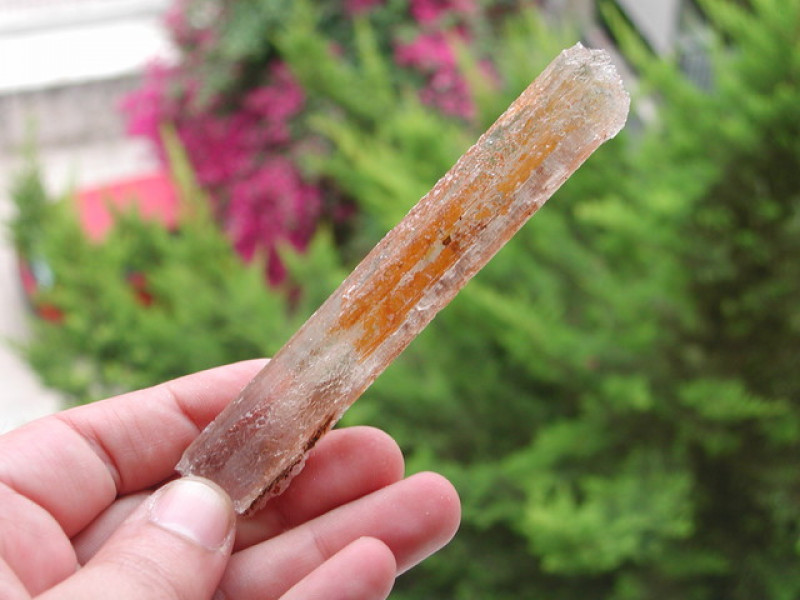
Sɛnea Wɔsɔ Mineral Hardness Hwɛ
Hardness sɔhwɛ yɛ anammɔn a edi kan a ɛnyɛ den a wɔde hu wɔ afuw mu. Nnwinnade bɛn na wɔde sɔ sɛnea aboɔden abo bi yɛ den hwɛ?
Mohs hardness test kit a ɛyɛ gyinapɛn no wɔ ade a wɔakyekyɛ mu a ɛwɔ mmeae 9, a emu biara kura ahwehwɛ a ɛyɛ den a edi kan 1-9 minerals: talc, gypsum, calcite, fluorite, apatite, feldspar, quartz, topaz, ne corundum. Diamond bo yɛ den, enti mpɛn pii no wogyaw.
Ɔkwan foforo a wobɛfa so ne sɛ wobɛpaw nneɛma a ano yɛ nnam na ɛyɛ dade a ɛyɛ den. Wɔtaa de kɔla kyerɛw saa picks a ɛwɔ awiei abien yi na wɔde hardness ranking biara kyerɛw so. Hardness picks yɛ compact kɛse na eye wɔ scratches a ɛyɛ pɛpɛɛpɛ na ɛnyɛ nea ɛda adi kɛse mu. Nanso, wɔyɛ pricier sen standard testing kits.
Hardness Test Anamɔn biara
Woasiesie wo ho sɛ wobɛyɛ Mohs hardness tester? Momma yɛnhyɛ aseɛ!
Boaboa wo sɔhwɛ kit, mineral specimen a wonnim, Mohs hardness chart, ne notepad ano na kyerɛw nea efi mu ba. Sɛ wowɔ dan mu a, yɛ sɔhwɛ no wɔ adwuma pon (ɛnyɛ dan mu nneɛma a ɛyɛ fɛ) a wɔde kata so a ɛyɛ den te sɛ rɔba so.
Anamɔn 1: Fa wo nsateaa nnadewa twetwe nhwɛsode no.
Nsateaa nnadewa yɛ 2-2.5 den, enti sɛ egyaw scratch a, woatew options no so akɔ minerals ntam 1-2.5. Fi hɔ no, fa gypsum twitwiw, afei talc.
No scratch biara nni hɔ? Kɔ anammɔn 2 no so.
Anamɔn 2: Fa gypsum anaa 2-level hardness pick twetwe nhwɛsode no.
Fa wo nsa biako kura nhwɛsode a wunnim no bere a ɛda pon no so no. Ebia wobɛpɛ sɛ woma nhwɛsode no ase (anaa baabiara a ɛnyɛ nea ɛda adi na ɛyɛ tratraa) hwɛ soro sɛnea ɛbɛyɛ a wobɛtwetwe.
Fa sɔhwɛ mineral anaa hardness pick na fa ano a ano yɛ nnam no to specimen no so. Sɛ wode nhwɛsode no si baabi a, twe aboɔden abo a wɔde sɔ hwɛ no denneennen fa nhwɛsode no so. Sɛ wopɛ ahobammɔ a, twe no fi wo nipadua ho.
Popa aboɔden abo mfutuma biara a ɛbɛba no na hwɛ sɛ ebia ayɛ mmerɛw anaa. Ɛsɛ sɛ ɛwɔ divot a wotumi hu, enti sɛ ɛho hia a, fa ahwehwɛ a ɛma nneɛma kɛse di dwuma.
Da so ara yɛ scratch biara? Kɔ anammɔn 3 no so.
Anamɔn 3: Kɔ so sɔ hwɛ denam mineral anaa hardness pick biara a ɛtoatoa so no so.
Di akwankyerɛ a ɛwɔ anammɔn 2 no akyi nanso fa wo 3-level material, afei 4-level material, ne nea ɛkeka ho kosi sɛ wubehu scratch.
Sɛ wuhu sɛ nsensanee bi a, hyɛ aboɔden abo a ɛmaa nsensanee no ne sɛnea ɛyɛ den no nsow. Wubetumi ahwɛ mprenu denam nhwɛsode no a wobɛtwe akɔ wo mineral no so, a ɛnsɛ sɛ ɛma ɛyɛ mmerɛw no so. Wubetumi afi hɔ ahwɛ wo Mohs hardness chart no mu ahwɛ mineral bɛn na wo nhwɛsode no betumi ayɛ. Ɛda so ara yɛ nea emu nna hɔ? Yɛ sɔhwɛ afoforo a wɔde hu sɛ wobɛtew so.
Pro Afotu a Wɔde Sɔ Sɔhwɛ
Afotu foforo bi a ɛbɛma woahwɛ ahu sɛ wobɛyɛ hardness sɔhwɛ a ɛfata ni:
Hwɛ sɛ divot bi wɔ scratch no mu bere nyinaa, ɛnyɛ streak kɛkɛ.
Bɔ mmɔden sɛ anyɛ yiye koraa no wobɛpaw nhwɛsode ahorow a ne kɛse yɛ mfinimfini de asɔ ahwɛ.
Sɛ wususuw sɛ ebia wim tebea asɛe nhwɛsode bi a wunnim a, hwehwɛ asinasin a abubu a ɛhyerɛn sen biara a wubetumi atwetwe.
Ebia nneɛma a wɔde ka ho anaasɛ nkekae a ɛwɔ soro no de nea ɛyɛ basaa aba. Sɛ wususuw sɛ ebia eyi te saa a, twetwe nhwɛsode no fã foforo.
Mma wo werɛ mmfi sɛ wubetumi ayɛ scratch test bɛboro pɛnkoro bere nyinaa!
Ɛno akyi no, mo nyinaa asiesie mo ho sɛ mobɛsɔ ahwɛ akɔ akyirikyiri!
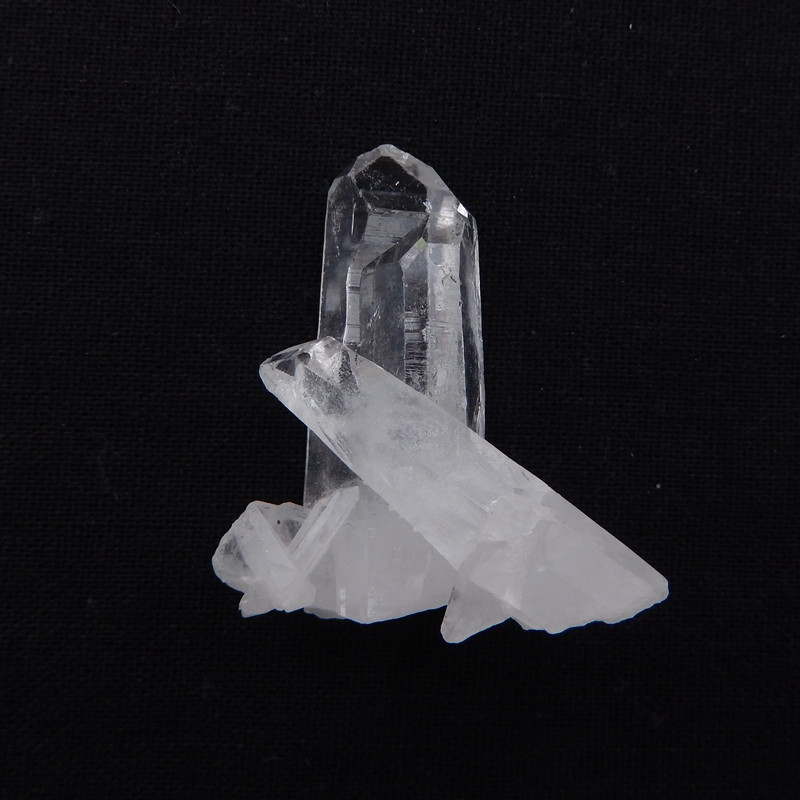
Ɛnyɛ Den dodo, Ɛnte saa?
Mfaso a ɛwɔ Mohs hardness rankings a wubehu so no kɔ akyiri sen aboɔden abo ho abenfo anaa asuafo. Obiara a ɔtɔ agude betumi ama wɔn aboɔden abo no ahyerɛn denam aboɔden abo a ɛyɛ den nsenia a obesusuw ho bere a ɔde agude sie no so.
Sɛ wufi ase sɔ hwɛ wie a, hena na onim? Ebia wubehu sɛ gemology ne wo frɛ ankasa! Sɛ wopɛ sɛ wuhu pii fa aboɔden abo sɔhwɛ ho a, sua sɔhwɛ nnwinnade anan a ɛho hia no ho ade !
Hwehwɛ aboɔden abo, nneɛma, ne agude a wubehia nyinaa wɔ ha wɔ Gem Rock Auctions!
SHOP YƐN AGYINATUO A ƐYƐ YIYE
搜尋Gemstone Encyclopedia
相關拍賣
相關文章
Obiara wɔ aboɔden abo a ɛne ne nsoromma agyiraehyɛde hyia. Wɔsan frɛ eyinom sɛ wo Nsoromma Abo. Sua pii fa saa abo yi ho na hwehwɛ nea wo Nsoromma Abo no yɛ.
10th May 2018
Mfiase no na wɔde Awo Abo anaa aboɔden abo no bata nsoromma mu hwɛ anaa ɔsram a ankorankoro bi awo ho. Hwehwɛ nea wo bo no yɛ na hwɛ abo a yɛwɔ sɛ yɛtɔn no
8th Feb 2021
Gem Rock Auctions wɔ Certified Gemstones a ɛso sen biara wɔ intanɛt so no mu biako. Hwehwɛ aboɔden abo sɔhwɛ afiri a wɔapene so yi mu.
24th Jul 2018
最新的文章
Chrysanthemum nhwiren abo yɛ abɔde mu anwonwade a ɛwɔ calcite, celestite, anaa andalusite nhwiren fitaa bi a wɔde asisi limestone tuntum anaa atɛkyɛ abo so.
13th Jan 2026
Rainbow lattice sunstone yɛ feldspar ahorow a ɛwɔ optical nsunsuanso abiɛsa fɛfɛ a efi nneɛma ahorow a wɔde ka ho a ɛwɔ hɔ no mu ba. Ɛyɛ ogya kɔla display ne lattice nsusuwso ma ɛyɛ coletor abohene a wɔntaa nhu!
12th Jan 2026
Thulite yɛ Norwayfo aboɔden abo a wɔntaa nhu a ɛda rosy hue a ɛyɛ hyew a efi zoisite mineral abusua a wɔtaa de di dwuma wɔ agude tebea ne pendants mu adi.
6th Jan 2026
文章類別
How To's is where you will find helpful articles from gem Rock Auctions on how to cut gemstones, select gemstones and buy gemstones.
9文章








